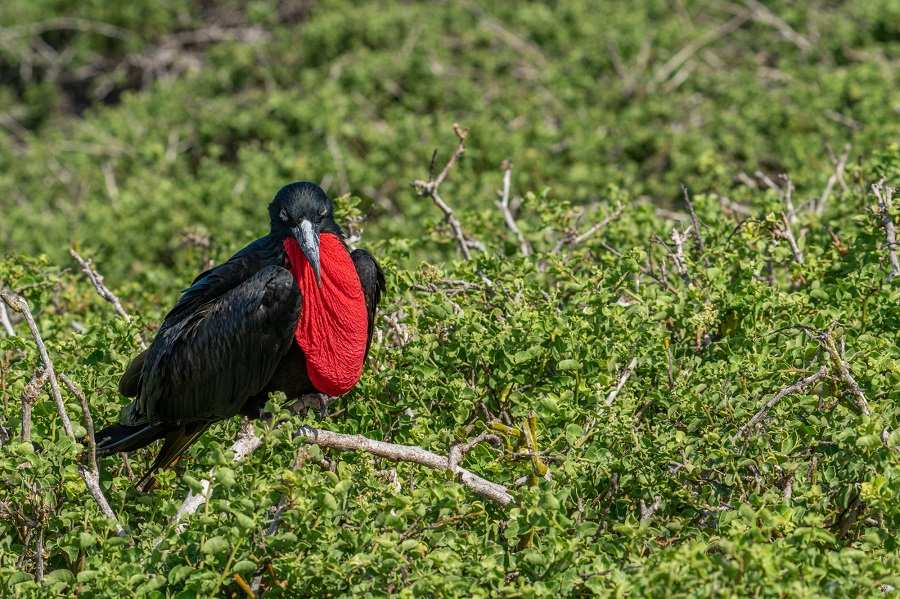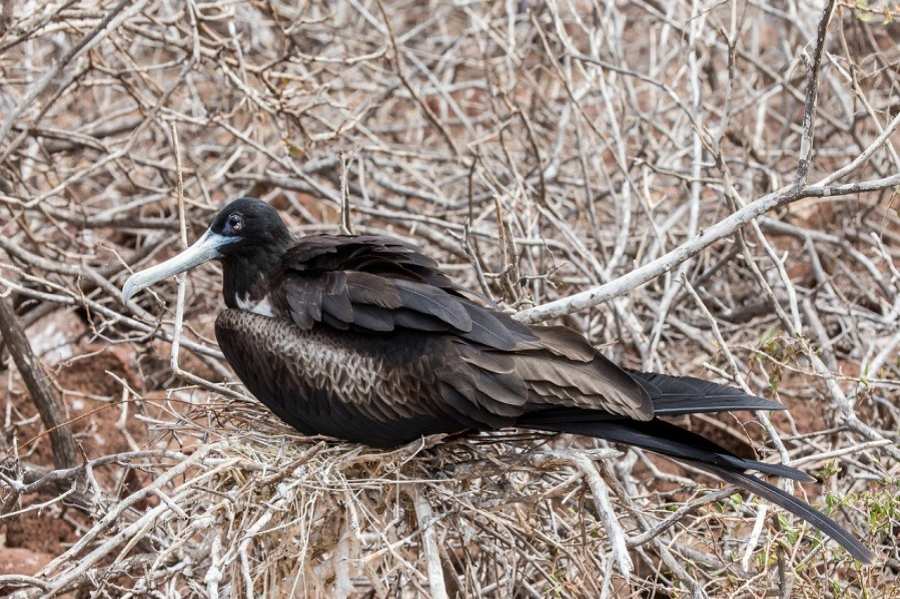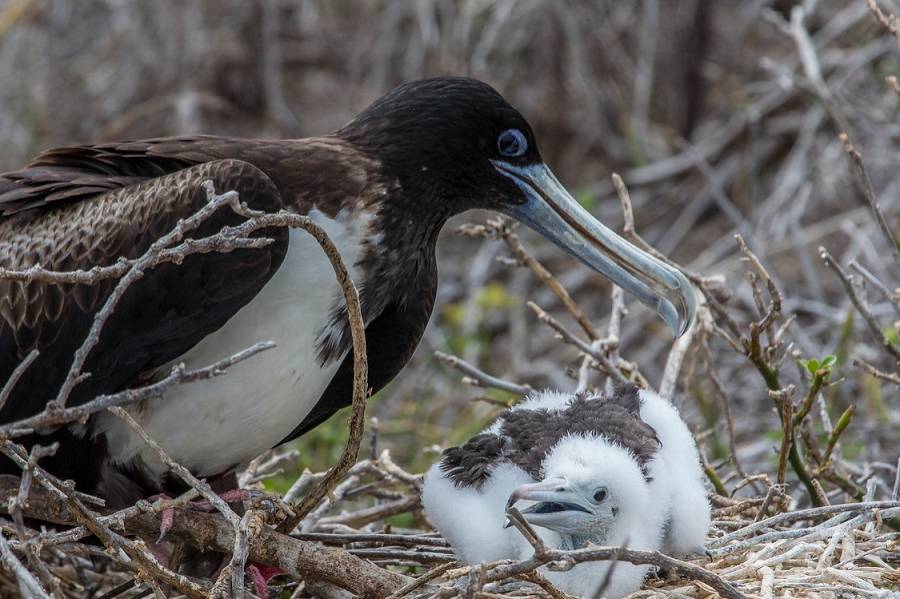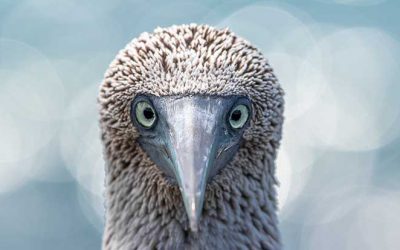Magnificent Frigatebird, the pirates of the sea
Stay up to date with our most recent news and updates
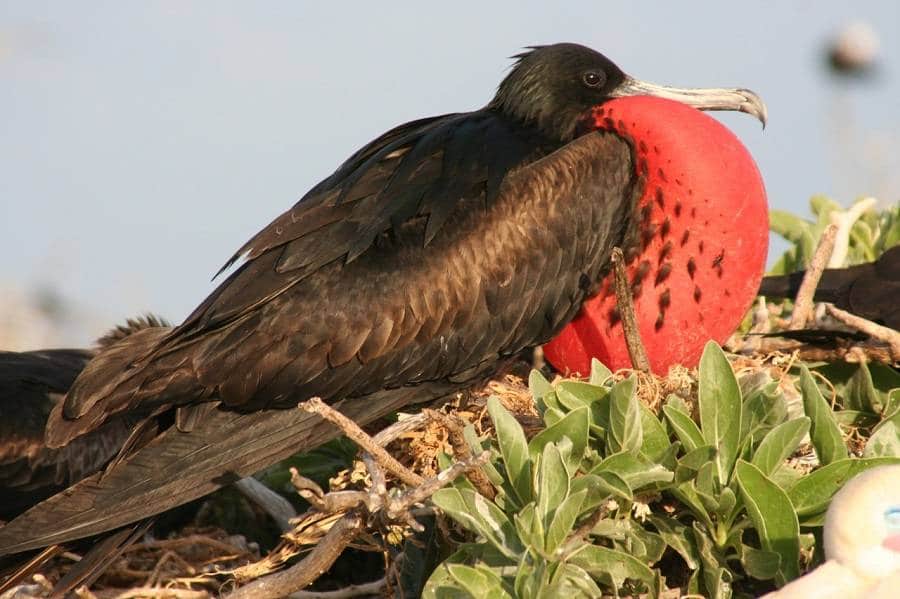
The Magnificent Frigatebird
Scientific Name: Fregata Magnificens
Biological Taxon: Breeding Endemic subspecies
Lifespan: 15-25 years
UICN red list status: Least Concern (LC)
Range: Throughout the archipelago. Main breeding in Seymour, Isabela, San Cristobal, Daphne Menor, Darwin, Genovesa, Gardner by Floreana.
The Magnificent Frigatebird of Galapagos “the pirate of the sea”, one of the most emblematic birds of the Galapagos Islands. It is important to mention that in the archipelago there are two types of frigates. The Magnificent Frigatebird considered an endemic bird to the Galapagos Islands and the Great Frigatebird is a subspecies that also inhabits other regions of the Pacific and the Indian Ocean.
We invite you to learn more about this unique seabird from the Galapagos Islands. Read on to the end and discover the most interesting facts about the Magnificent Frigate.
You would be interested in learning more about other Galapagos seabirds, click here.
The pirates of the sea?
This large seabird (Magnificent Frigatebird) considered endemic to the Galapagos Islands, has adapted to get its food without having to go underwater since its plumage is not waterproof. If it were to submerge for more than 2 minutes, it would become soaked, sink, and finally die.
But why the pirates of the sea? It is effortless, these birds take advantage of their large size to snatch food from other smaller birds such as blue-footed boobies, red-footed boobies, among others.
The appearance of the Magnificent Frigatebirds
The Magnificent Frigatebird is a large seabird with brownish-black plumage, long narrow wings, and a forked tail. In the Galapagos Islands due to the scissor shape of the tail, it is also called “Tijereta”.
The plumage of the male is black all over the body with a purple sheen on the upper body feathers. It has a striking red gular sac (throat pouch) that inflates during the breeding season to attract a mate. The female is slightly larger than the male and has black plumage with a white breast. It has blue eye-ring.
Adaptations of the Magnificent Frigatebird
The Magnificent Frigatebird spends most of its time flying over the ocean in search of food, it could spend days and nights in flight due to its ability to sleep when flying.
Did you know? They sleep half the brain to rest just like dolphins and can also sleep the whole brain to take 5-minute naps when in the air.
These seabirds are not waterproof in their feathers and they get puddled if they stay in the water for more than 2 minutes.
On San Cristóbal Island they go to the “El Junco” lagoon to drink some fresh water and take a bath to clean their salty feathers. When you can’t find fresh water lagoons, they use water-filled clouds to clean their wings and shake their body.
The main diet
These seabirds, because they cannot dive, catch flying fish or squid out of the air when they jump out of the water.
Their main diet includes fish, crustaceans, jellyfish, and baby green sea turtles.
What is the best season to visit Galapagos? More details here.
Nesting and mating
When the breeding season begins, the males perch in low trees, inflating their red gular sac like a balloon, spread their wings and flap them proudly as they move their heads back and forth; and they also make noise with their beaks. Once the female chooses her mate, she descends and participates in the mating ritual.
The nest is built with twigs and branches on small trees, bushes near the shore. The female lays 1 egg that is incubated by both parents for 50-60 days. The chick is fed by both parents for 3 months, then the male leaves to prepare for the next breeding season and only the female cares for the chick for another 9 months.
Interesting facts
- The Magnificent Frigatebird has the largest wingspan and body weight ratio of any bird in the world.
- The Magnificent Frigatebird its name “the condor of the oceans” due to its ability to spend days and nights in flight.
- The Magnificent Frigatebirds are called “the pirates of the sea” because they steal the food of other seabirds such as boobies and pelicans.
- Magnificent Frigatebird colonies do not normally mix with Great Frigatebird colonies.
Without a doubt, “the pirates of the sea” are one of the most emblematic and beautiful birds that you can discover on your next adventure through the Galapagos Islands …
DON’T STOP YOUR WANDERLUST!
📌 Discover our best deals, to the Galapagos Islands! Click here.
If you liked this post, share it with your friends and subscribe to our newsletter to keep up to date with interesting news from Galapagos 🐢, Ecuador 🇪🇨 , and other magical destinations in South America 🌎.
RELATED POST
Traveling to the Galapagos Islands in 2022: tips, what to do, and how to book the best trip ever
Learn more about the Galapagos Islands and how to make the most of your trip to this natural destination with this quick guide.
Blue-footed Booby Interesting Facts
The blue-footed boobies of the Galapagos Islands, as beautiful as they are unique. Discover here some interesting facts about them.

